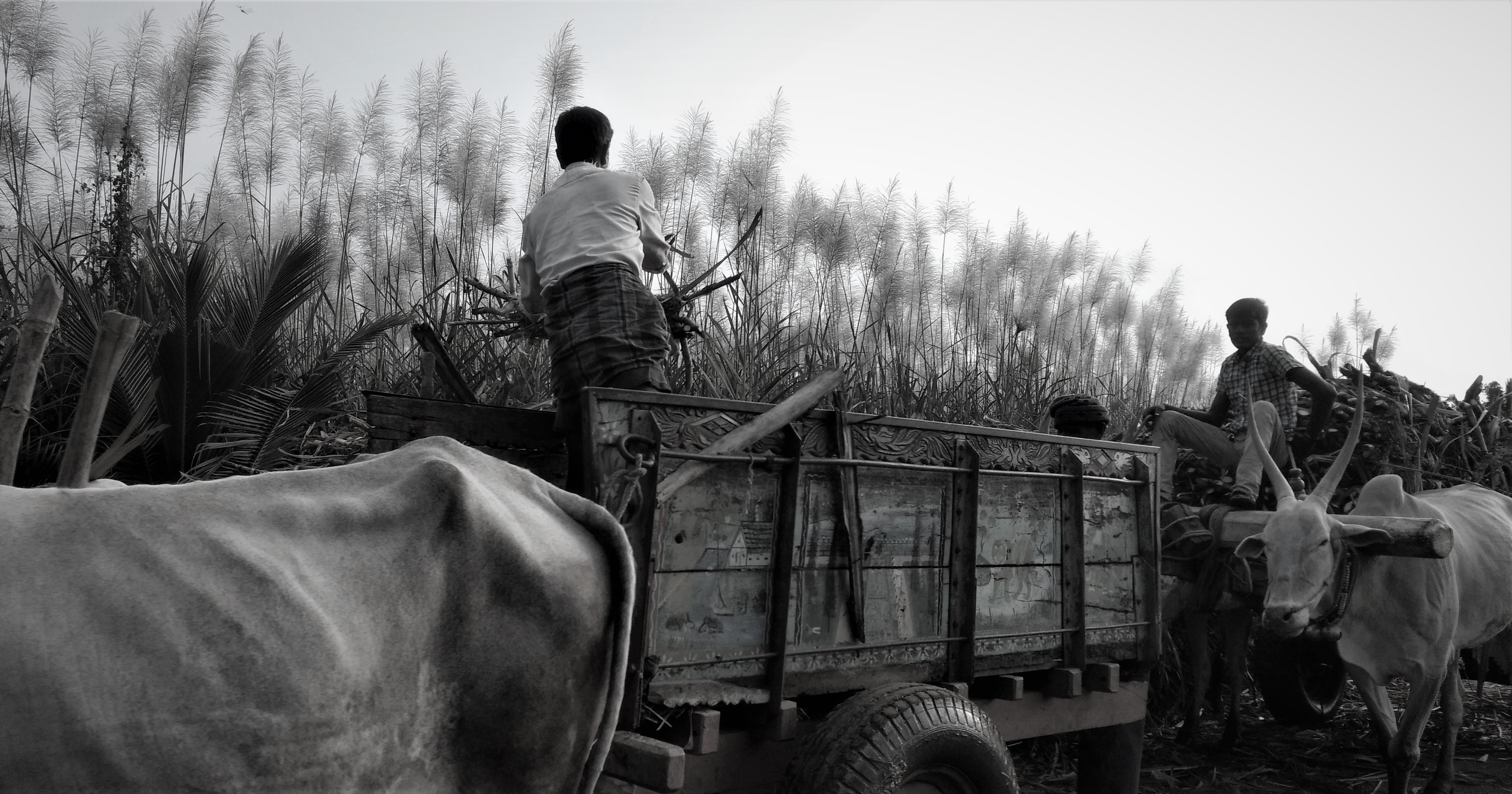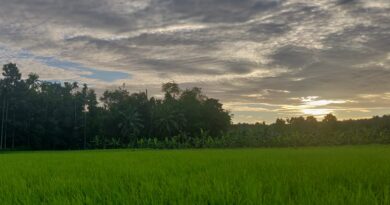Age of Urban Farming and the Next Revolution in Agriculture
Somewhere, we have read that the history of agriculture is also the history of technology. If we tweak the sentence a little, to read it as “the history of agriculture is the history of the spirit of the farming that evolved over centuries and shaped civilisations.” There are revolutions as cornerstones in this timeline, and a new era of urban farming is setting foot in the cramped, crowded and choking Indian cities. With millions of slum dwellers, congested alleys and Lilliputian rooftops fill our ludicrous cityscapes; the question of the hour is, whether the urban farming can become the next big thing in the history of Agriculture?
Also Read: Winter is Coming, and so are the Hilsa
Before digging up for answers, let’s have a quick look at the three major agricultural revolutions that paved a way to urban farming of our age. The first revolution took place nearly 10,000 years ago when the first farmer minds in the Fertile Crescent tried some weird stuff with crops like barley, wheat, chickpeas and lentils. As soon as people settled down, domesticated plants and animals, the kind of society in which we are living today started to shape up.
The next cornerstone, the industrial revolution, happened in and around 1700 to 1900, which enabled faster and more efficient farming techniques.
The third turn was of the Green Revolution in the mid-20th century, which had dubious undertones regarding crop yield, usage of chemicals and in kindling the very historic guiding spirit of agriculture. Now that, we are at the brink of food deserts, where the less privileged urban populace wedged together into faceless human entities, who deprived of supermarkets, food courts, vegetable hubs, and organic super shops. Here comes the potential of urban farming, which has various forms and names like terrace farming, rooftop farming and vertical farming.
Also Read: A Walk on the Sickle’s Edge: When Looking for Farmers in the Union Budget 2018
As the intense urbanisation found its roots in India, a new consciousness was developed and spread among the urban dwellers that placed healthy food, sustainable production and preservation of ecosystems in a different light. What started as a hobby turned into selling surplus produce in the neighbourhood and nearby markets. Fruits, vegetables and even micro paddy fields found their place on narrow terraces and gardens of the Indian cities. Vast farmlands and painstaking process of farming as a large scale rural phenomenon are slowly giving way to urban farming as a new mode of production. It shows, with the support of proper technology, farming can go to places.
Delhi, Mumbai, Chennai, Hyderabad, and Bangalore are the front-runners in this new wave of urban farming. In many cities, civic bodies like the state horticulture departments support the rooftop farmers with subsidy kits, including seeds, farm manure, red earth, and other necessary ground support. Estimates show that people who produce their own vegetables and fruits have been earning around 25 percent cut in their monthly family expenses. Moreover, indoor farming is far safer than outdoor farming. The outdoor farming is appeared more vulnerable to unpredictable weather. Also, the amount of chemicals used by small-scale urban farmers is very lesser than big enterprising farms. Most of the urban farmers use bio-wastes like the fish waste to fertilize the plants, which open up a new door to the urban waste management at the micro level, to solve the domestic garbage issue at the source.
Also Read: Organic Farming: Breaking the Puritan Myth and Searching for the Truth
Experiences from around the world prove that urban farming far more environment-friendly with very less waste and optimal use of the finite farming area. It can be a boon for the lower income groups as an alternative and profitable source of income. Farmers converted some dumping grounds near the slums in Mumbai and riverbed along the river Yamuna in Delhi into fertile farmlands to produce profitable vegetables like tomatoes. Such initiatives not only keep the cityscape green but also empower the vulnerable, underprivileged population, who has been living under the looming threat of evacuation.
As urbanization grows, cities sprawl into the former farmlands in the suburbs to expand themselves. So, finding a potential place for farming is the main challenge of urban farming. Moreover, the urban farmers should well equip with the latest technology to provide their crops everything nature provides in the traditional farming. There are some farming techniques like Hydroponics, which is the growing of plants in a soil-less medium or an aquatic-based environment, Aquaponics, the combination of aquaculture and hydroponics that grows fish and plants together in an integrated environment, Biodynamic Farming, where only natural compost is used, and Vermicompost, which is using earthworms to convert organic waste to a nutrient-rich organic substance that can be added to soil, to support urban farmers.
Also Read: How GST Can Reinvent Hope for the Crops and Change the Plight of the Indian Farmer
Urban farming is also suitable for subsistence farmers who produce food for themselves and their families on a daily basis, which is not intended to be sold in a market. Other potential urban farmers are women, retired persons and self-help groups. There are a number of start-up firms operating in all the major Indian cities which offer professional support and business opportunities for those who want to try something big in urban farming. Expert hands are inevitable to design, engineer, research and analyse market for a more efficient and sustainable urban farming model. Edible Routes in Delhi, iKheti in Mumbai, Squarefoot Farmers in Bengaluru, homecrop in Hyderabad, greentechlife in Bengaluru, and futurefarms in Chennai are some of the major organizations and firms supporting urban farming in India.
By establishing a competitive environment for urban farming, we can keep the farm gates close to consumers and vendors and reduce reliance on logistics and cold storage, which in turn will impact the market prices, global warming and pollution. An ancient practice, agriculture evolved over the centuries by incorporating modern technologies and tools. With the global population is projected to hit the 9.3 billion mark by 2050 and the urban migration is at its peak in countries like India, food security is the most demanding challenge in our times. Moreover, the looming threat of a corporatised farming industry is already gripping the agricultural sector worldwide.
Also Read: How Kudumbashree Redeemed the Fallen Agrarian Angels as Agripreneurs
Obviously, urban farming is not the only solution to address the skyrocketing need for food and the eternal nightmare of hunger. But it can become one of the major tools in a comprehensive spectrum of solutions to meet food requirements while keeping the nature and natural resources as enriched for the future generations. It should be also taken into consideration that creating more arable land will lead to the destruction of more ecosystems and species.
“The ultimate goal of farming is not the growing of crops, but the cultivation and perfection of human beings,” wrote Masanobu Fukuoka, Japanese farmer and philosopher in his book, The One-Straw Revolution. If urban revolution can kindle that spirit of farming, which was the driving force of the history of agriculture, we have our fourth agricultural revolution in the making.
Also Read: Cold Storage and Indian Agriculture: The Cold Future of a Sleeping Giant
Picture courtesy: Wikimedia



